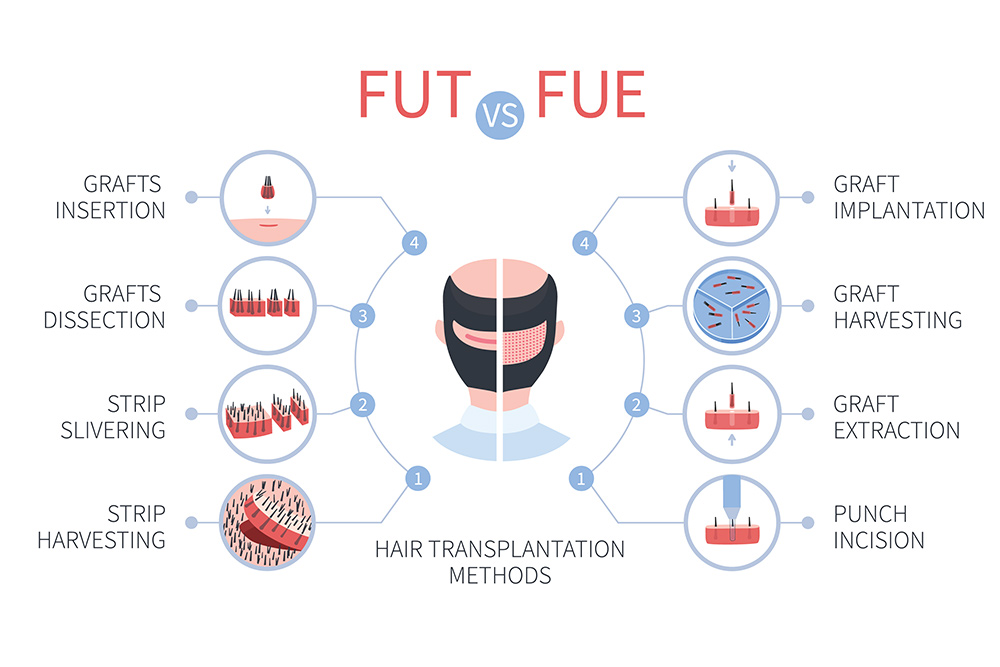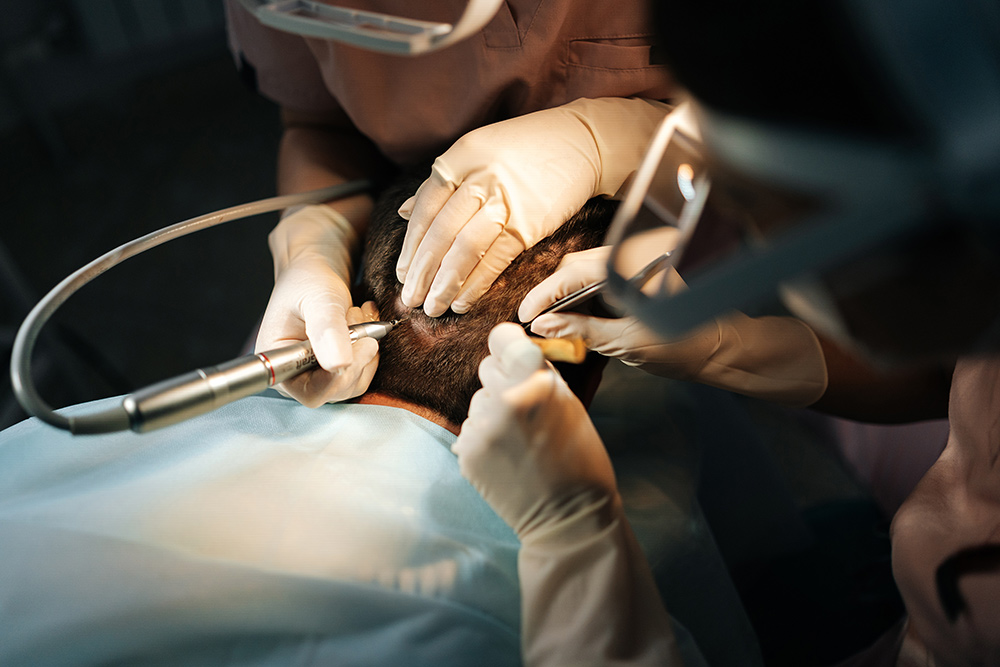If you’ve been researching hair restoration, you’ve likely come across two main procedures: FUE and FUT hair transplants. While both techniques are designed to restore hair using your own natural follicles, their method, recovery, and results vary significantly.
At Darling Downs Hair Transplant Clinic, we exclusively perform FUE (Follicular Unit Extraction)—and for good reason. In this guide, we’ll explore the differences between FUE vs. FUT hair transplants, including their success rate, scarring, recovery time, and overall results—so you can make an informed decision.
Table of Contents
ToggleWhat Is a Hair Transplant?
Before we dive into comparing techniques, let’s take a step back. If you’re asking “what is a hair transplant?”, it’s a surgical procedure that redistributes your own healthy hair follicles from the back or sides of the scalp (donor area) to areas where hair is thinning or balding (recipient area).
This isn’t synthetic hair or a wig—it’s real, living hair that grows naturally once transplanted. And when performed by an experienced surgeon, the results can be life-changing.
Understanding the Techniques: FUE vs. FUT Hair Transplant
When it comes to surgical hair restoration, the two most common techniques are FUE (Follicular Unit Extraction)and FUT (Follicular Unit Transplantation). Both aim to restore natural hair growth using your own follicles, but they differ in how those follicles are harvested and the recovery experience they offer.
FUE (Follicular Unit Extraction)
FUE is the more advanced and minimally invasive option. Rather than removing a strip of scalp, individual hair follicles are extracted one by one from the donor area using a precise punch tool. This allows for a more custom approach and significantly reduces visible scarring.
Benefits of FUE:
- Minimal downtime and faster healing
- Tiny dot-like scars that are barely noticeable
- Ideal for short hairstyles or discreet procedures
At Darling Downs Hair Transplant Clinic, we specialise in FUE and offer three techniques to suit different needs:
- Shaved FUE – Ideal for patients who want full visibility for optimal graft extraction
- No-Shave FUE – A more discreet option where surrounding hair conceals the donor area
- Long-Hair FUE – Allows longer hair shafts to be transplanted for immediate visible results
FUT (Follicular Unit Transplantation)
FUT, sometimes referred to as “strip surgery,” involves surgically removing a strip of scalp from the back of the head. The strip is then dissected into smaller follicular units for transplantation. While effective, this method:
- Leaves a visible linear scar
- Requires stitches and longer recovery
- Is more invasive overall

There are some distinct differences between a FUE vs FUT hair transplant.
FUE vs FUT Hair Transplant: Side-by-Side Comparison
| Feature | FUE | FUT |
|---|---|---|
| Scarring | Tiny dot scars, hardly visible | Long linear scar on donor area |
| Recovery Time | 3-5 days | 10-14 days |
| Pain / discomfort | Minimal | More discomfort due to stitches |
| Post-Op Care | Simple and fast healing | Requires wound care and suture removal |
| Procedure Time | Longer (due to precision) | Shorter |
| Precision | High – grafts individually placed | Low – grafts placed in groups |
| Cost | Slightly higher | More cost-effective |
FUE vs FUT Success Rate
When comparing the success rate of FUE vs. FUT, both procedures can yield excellent outcomes—especially when performed by a highly skilled and experienced surgeon. However, FUE has become the preferred technique for many clinics and patients due to its precision and lower risk profile.
FUE is also known for:
- Higher graft survival rates, particularly when harvested and implanted with care
- Fewer complications, thanks to its minimally invasive approach and reduced trauma to the scalp
- More natural-looking results, especially in the hairline and temple areas, as each follicle is strategically placed for density and direction
At Darling Downs Hair Transplant Clinic, Dr. Jiindal personally performs each FUE procedure, from planning to implantation, ensuring optimal results for every patient.

Here are some things that you should know when it comes to a FUE vs FUT scar.
FUE vs FUT Scar: What Patients Should Know
The issue of scarring is one of the main reasons patients opt for FUE over FUT.
- FUT creates a long linear scar where the scalp strip was removed—this can be visible with short hairstyles or if healing doesn’t go smoothly.
- FUE results in small, circular scars where each follicle was harvested. These are typically unnoticeable, even with short or shaved hairstyles.
Book Your FUE Hair Transplant Consultation with Darling Downs Hair Transplant Clinic
At Darling Downs Hair Transplant Clinic, we are committed to providing expert-led hair restoration tailored to your needs. Whether you’re experiencing thinning hair, female or male pattern baldness, or a receding hairline, our FUE hair restoration surgery offers a minimally invasive solution for natural, long-lasting results.
BOOK YOUR FREE CONSULTATION HERE
Frequently Asked Questions
Does FUE leave scars like FUT?
No. Unlike FUT, which leaves a noticeable linear scar, FUE creates small dot-like scars that are barely visible—even with short hairstyles.
Is FUE more expensive than FUT?
In general, FUE may cost more because it’s more labour-intensive and time-consuming. However, many patients find the added benefits—like reduced downtime and scarring—well worth it.
Which is better? FUE or FUT?
When comparing FUE vs. FUT hair transplant, most modern clinics and experienced surgeons now favour FUE due to its minimally invasive approach, faster recovery, and more natural-looking results. FUE also offers greater customisation in hairline design and leaves no visible linear scar, making it the preferred option for patients who value both precision and discretion.
How long does it take to recover from FUE?
Recovery after a FUE hair transplant is relatively quick. Most patients can return to work or light activities within 3–5 days, and scabbing typically resolves within a week. While initial hair growth begins at 3–4 months, full visible results usually take 9–12 months, depending on the individual’s hair growth cycle and post-operative care.
Can FUE be used for areas like the hairline or beard?
Absolutely. Because FUE allows for individual follicle placement, it’s ideal for delicate areas like the hairline, temples, or even beard and moustache transplants.







